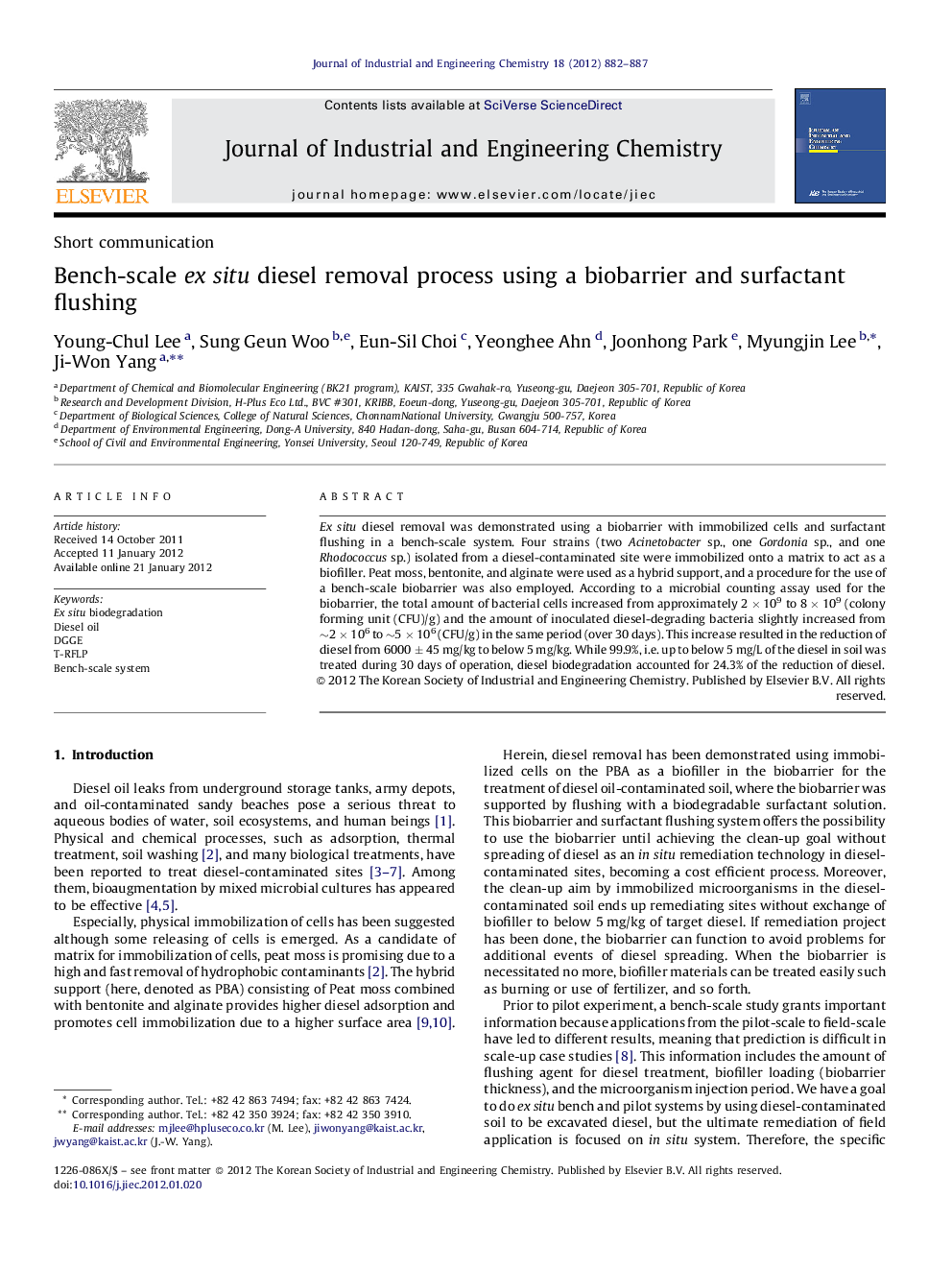| Article ID | Journal | Published Year | Pages | File Type |
|---|---|---|---|---|
| 227972 | Journal of Industrial and Engineering Chemistry | 2012 | 6 Pages |
Ex situ diesel removal was demonstrated using a biobarrier with immobilized cells and surfactant flushing in a bench-scale system. Four strains (two Acinetobacter sp., one Gordonia sp., and one Rhodococcus sp.) isolated from a diesel-contaminated site were immobilized onto a matrix to act as a biofiller. Peat moss, bentonite, and alginate were used as a hybrid support, and a procedure for the use of a bench-scale biobarrier was also employed. According to a microbial counting assay used for the biobarrier, the total amount of bacterial cells increased from approximately 2 × 109 to 8 × 109 (colony forming unit (CFU)/g) and the amount of inoculated diesel-degrading bacteria slightly increased from ∼2 × 106 to ∼5 × 106 (CFU/g) in the same period (over 30 days). This increase resulted in the reduction of diesel from 6000 ± 45 mg/kg to below 5 mg/kg. While 99.9%, i.e. up to below 5 mg/L of the diesel in soil was treated during 30 days of operation, diesel biodegradation accounted for 24.3% of the reduction of diesel.
